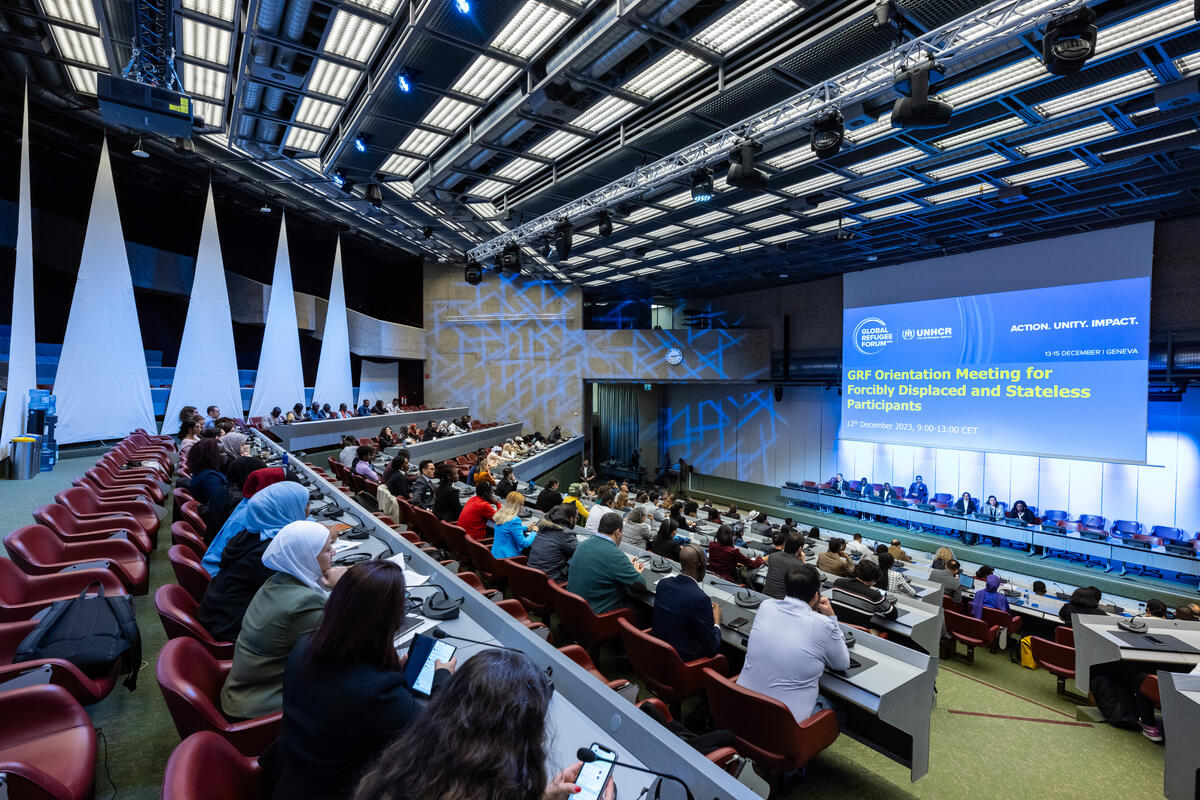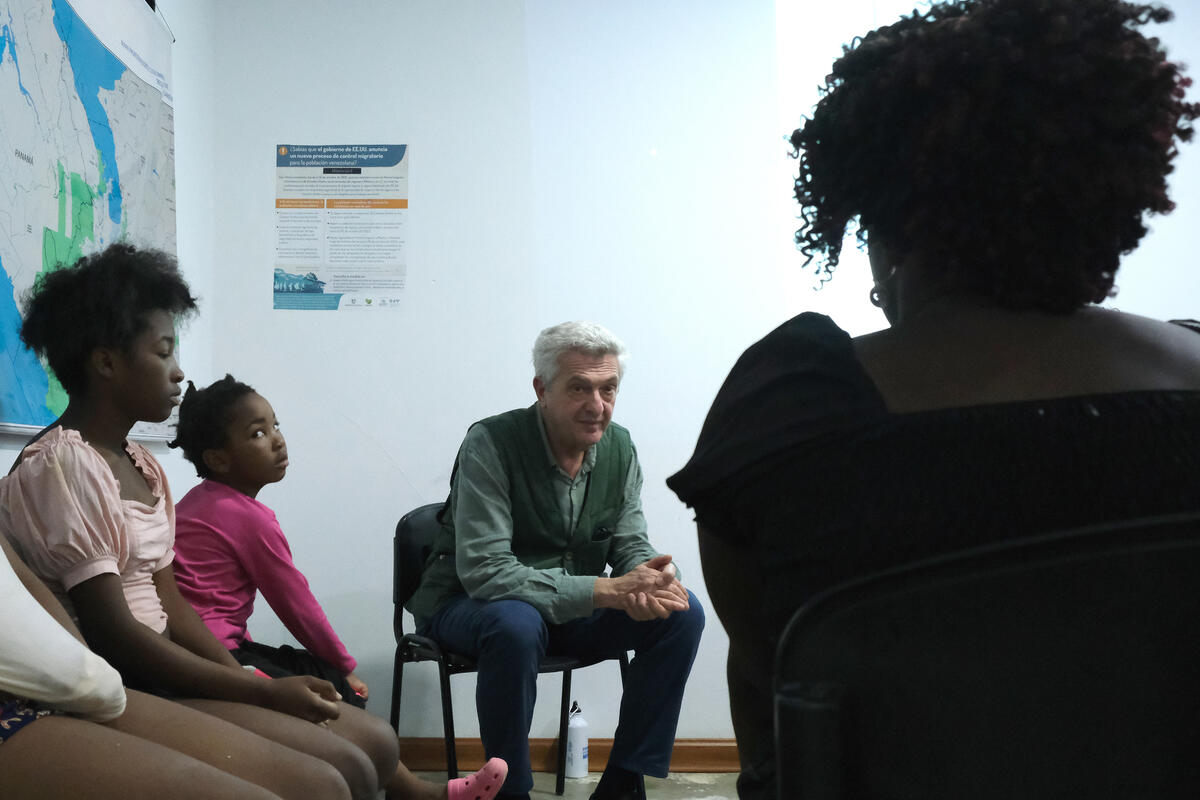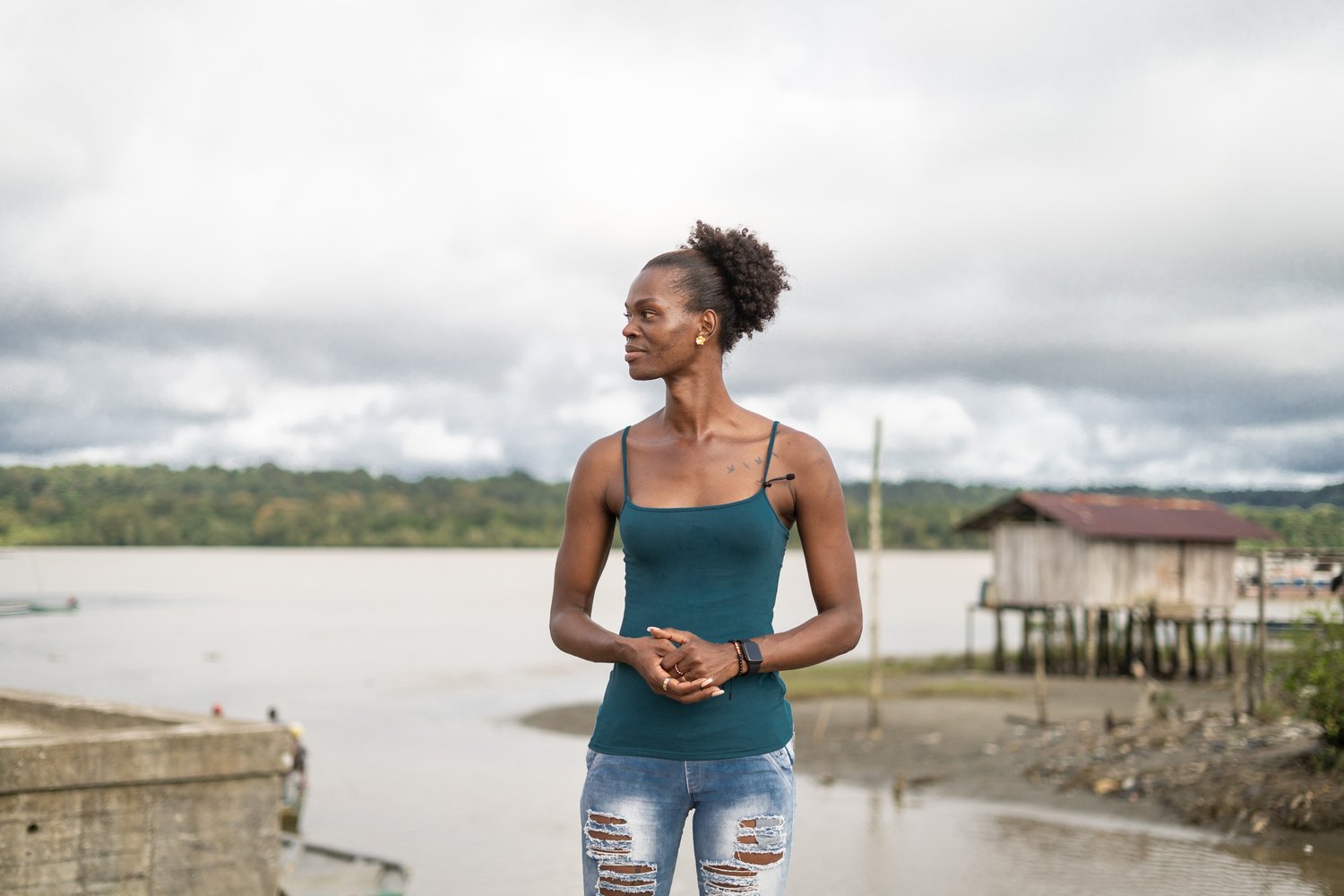Colombia's San Juan River region reeling from displacement, blockade, says mission
Colombia's San Juan River region reeling from displacement, blockade, says mission

QUIBDÓ, Colombia, Aug 27 (UNHCR) - A team of aid workers and government officials visiting Colombia's Middle San Juan River region has found hundreds of previously-unreported displaced people and witnessed the impact of a blockade on the lives of communities downriver.
This was the first humanitarian mission to the area in north-western Colombia's Chocó province since fighting erupted between left-wing guerrillas and right-wing paramilitaries in early August. The team sought to monitor the humanitarian situation in the area, conduct a census on the displaced population and evaluate their needs.
Organised by the municipal and provincial authorities with UNHCR support, the mission included representatives of the Colombian Ombudsman's and Attorney General's offices, the Social Solidarity Network (the government agency coordinating assistance to displaced people), the provincial health department, the diocese of Itsmina, OCHA (the UN Office for the Coordination of Humanitarian Affairs) and the non-governmental organisation, CODHES.
Returning on Tuesday, they reported the discovery of 606 internally displaced persons (IDPs) when they visited 15 Afro-Colombian and indigenous river communities along the San Juan River. These IDPs had not yet been registered or received assistance because of an economic blockade imposed by an irregular armed group to keep essential goods out of their enemies' reach.
Aid agencies are now organising relief assistance for this group of IDPs, and sending a health team to the area today.
Another 640 IDPs who had fled to Itsmina, the main town in the region, were identified earlier and have already received emergency aid from the local authorities, the local dioceses and the International Committee of the Red Cross.
The group identified this week brings to more than 1,200 the total number of people displaced by the recent fighting. "People interviewed by the mission said that many more are hiding deep in the rainforest or have fled to the mountains," noted UNHCR spokeswoman Jennifer Pagonis at a news briefing in Geneva on Friday.
The visiting team was also able to verify first hand the effects of the economic blockade imposed by an irregular armed group in early July.
"The San Juan and its tributaries are the only means of transport in this region, and the blockade, which severely restricted the movement of people, food, medicines and basic products like fuel, sugar and salt, has seriously affected the food security, health and education of the communities downriver," said Pagonis.
The few existing health services in the area have been disrupted, and scarce medicines have contributed to an increase in diseases such as malaria, tuberculosis and parasitic infections. Fighters from the irregular armed groups have used school buildings as barracks, damaging them in the process. Teachers have been unable to return from their holidays and children have missed over 30 days of school.
Pagonis warned, "Although the blockade has now been partially lifted, the humanitarian and security situation remains precarious."








